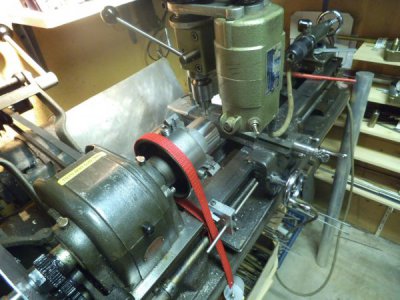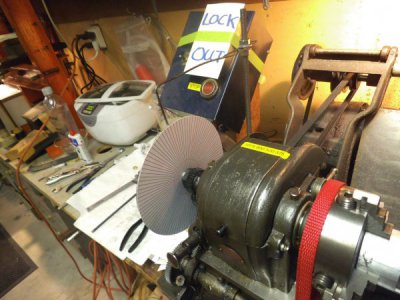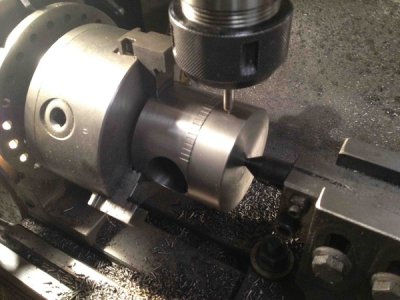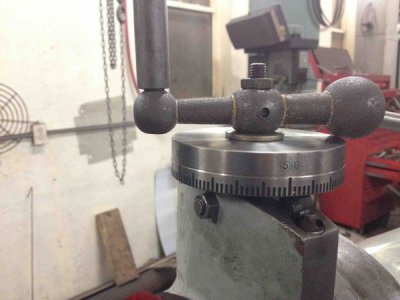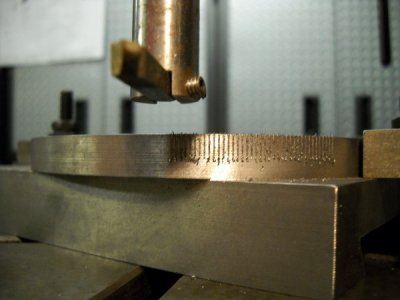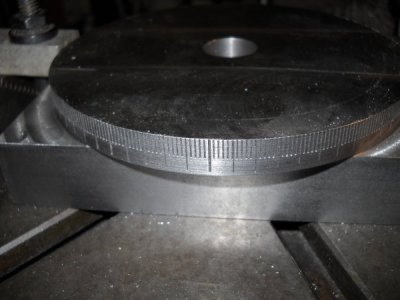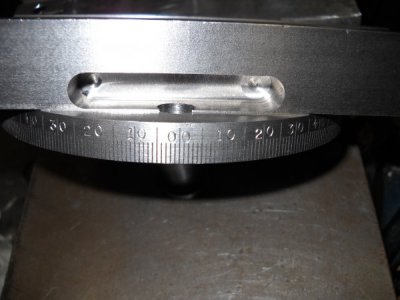- Joined
- May 15, 2016
- Messages
- 98
I have 3" diameter degree dial made from 303 stainless steel that needs to have 360 lines engraved around the periphery. I tried some practice engraving of the lines .005" deep in a scrap piece of 303 SS using a 90 degree tool bit on its side and using the lathe as a shaper. The result looked good but it is not a good solution because it was tough on the tool and for 360 lines I will resharpen many times. I am sure if I had used cast iron it would have worked well because cast iron tends to crumble when cut. So I was thinking of engraving the lines using a .010" stub ball end mill mounted in my Unimat Milling head on my lathe.
Does anyone here have a better solution or idea?
Dick
Does anyone here have a better solution or idea?
Dick


